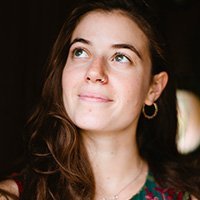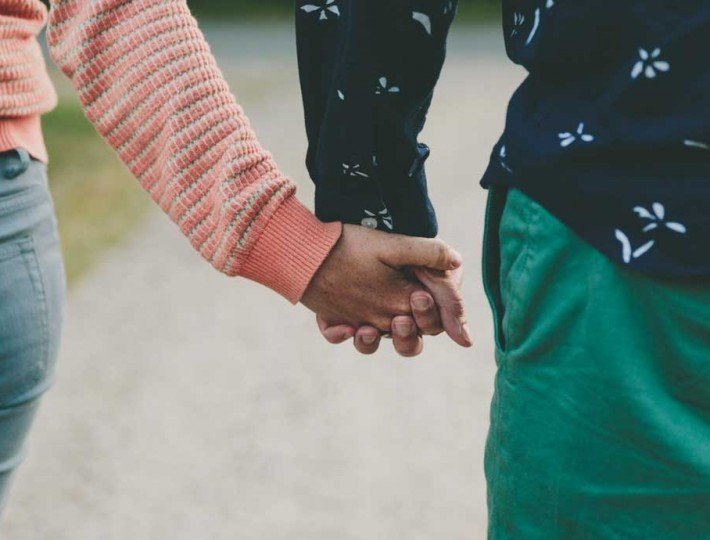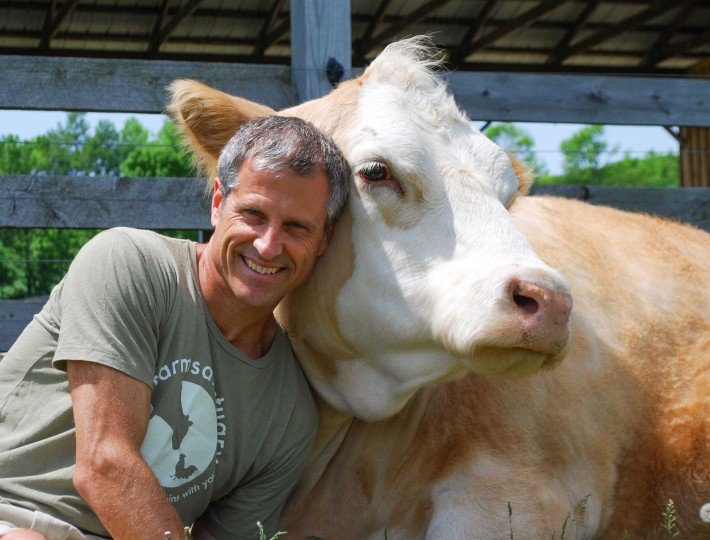In a beautiful mantra popularized by the Anusara tradition, Om Namah Shivaya Gurave, each individual is called to see her own strength and independent vitality:
I bow to the goodness within myself, the true eternal teacher. This essence inside of me takes the form of pure joy, pure awareness and pure bliss; always present, always luminous and full of peace. This essence is my true nature, independent in its existence, full of light and always supporting me.
This mantra is a deeply empowering one, a herald of self-sustenance and sufficiency, and a deep bow to the universe’s nurturing guidance. Seane Corn, the internationally renowned yoga teacher, known for her work in social activism, might consider this mantra only one piece—albeit an important one—of the yogic puzzle.
In her interview with Suzanne Bryant in the upcoming YOGA.IS conference Corn opens up about her own process for cultivating tools of awareness that would ultimately heal her own traumas and drive her on the path towards helping others. For Corn, the call to help others has always been a part of her psyche, “I have drive and an unusual amount of stamina,” she tells Bryant. Certainly for Corn, who is of Polish Jewish descent, the ancestral stores of trauma have given her what she calls a “physical need to interact and engage. It feels ancestral to me,” she says.
But what exactly is trauma, and how does trauma relate to service and transformation? According to Corn’s teaching methodology, “The real yoga practice is relationship and engagement not to move from, but to move towards our traumas.” Trauma, for Corn, is “anything that overwhelms our capacity to cope and leaves us feeling helpless or hopeless.” Of course, as Corn tells Bryant, trauma will be different for everyone, but unprocessed trauma—which for Corn was sexual molestation and a severe obsessive-compulsive disorder—as many of us have, works in similar ways for all of us. If we’re not taught to process our stuff, and “we’re raised in environments where we’re taught to suppress and repress our feelings, and we’re being introduced to substances like food, drugs, sex, alcohol, caffeine, and television as a way to numb ourselves out,” then the energy that is our trauma, says Corn, will stay in our cells and eventually we will have to confront it.
In Corn’s own journey, the powerful tool of breath in the yoga practice helped her break through the panic that surrounded her disorder. What happens in yoga, she says, is that when you stretch and move, you can unlock stored trauma and the subtle energy arises. From there, we have the opportunity to begin to deal with some of the suppressed emotions. “These suppressed emotions block us, they make us shut down, critical, they make us act out,” but ultimately, says Corn, we must connect ourselves to all of the rage, grief, fear that is stored inside of us. “In the practice of yoga we cannot separate ourselves from our shadow self. We have to learn how to be in relationship to it, learn from it, grow from it, expand our perception not in spite of it, but because of it.” Ultimately, in moving towards our traumas, our fears, and our desires, we’ll begin to develop a real relationship with our past self and our trauma, and “cultivate the wisdom that comes from it, and then heal it in time through compassion, forgiveness and understanding.”
The eventual goal in working with our darkness and our fear, is to come to begin to recognize our habitual patterns in our minds and in our bodies so that, as Corn says, “When I’m in challenging, even heartbreaking situations, I can stay in my body and not dissociate…and make choices that are in alignment with my center… [this practice] allows for more clarity rather than reactivity.” Not only this, but Corn encourages us to deal with our own trauma and simultaneously recognize that our world is in “collective trauma” and most societal problems are happening because people don’t have the tools or skills to deal with that trauma, which leads to distress, rioting, bigotry, and acting out.
Once we can develop that vast empathy that connects our trauma to the broader communal suffering of the world, we begin to walk down the path toward transformation. As Corn says, “Transformation gives you an opportunity to look at the bigger picture.” In life, experience arises that is often incomprehensible, but with the tools developed through coming to terms with our “shadow self”, we will be able to see even the most horrific experiences through a broader, even spiritual lens.
“It takes time and patience,” says Corn, “but the result is that we can take responsibility for the whole of our lives and understand ourselves and others, and transcend the limits of belief that keep us stuck or depressed.” We halt our consistent relinquishing of control to the falsified stories we have about ourselves. “We no longer allow our self-esteem to be influenced from the outside in…we develop empathy for our self,” she says.
Corn says that relinquishing control requires trusting in the aphorism that “in the practice everything happens as it’s supposed to for our soul to transform.” Though it is difficult to accept, Corn encourages us to see that empowerment can “only come from experience—learning how to be in light can only come from understanding the essence of our shadow.”
And so Seane Corn’s empowerment mantra may look slightly different than the one recalled above. “If I can begin to understand how delicate and tender my own individual journey is and how the teachings and medicine show up in various ways at times and that all of it happened for the evolution of my own consciousness and the betterment of my soul, then I can’t help but look at other people and recognize that they too are doing the best they can with what they know and the little tools they have,” she says. “They too are dealing with trauma that I don’t understand but it is no less significant to their consciousness and psyche and they are also here to understand what love is on a timeline that is really just between them and their god of their understanding.”
The imperative, then, is that we can try to have a bit more empathy for the journey of others “and hold a loving space for them…to meet them where they’re at and share with them, if invited, so we can experience ourselves exploring a shared pathway.” Corn’s decisive power lies in her ability to not only reveal her own shadows and vulnerabilities but to call attention to the ways in which even the most spiritual and religious communities are complicit in the perpetuation of inequality. “The spiritual activist’s quest is to take accountability…[and to begin] healing those perspectives within ourselves so that when we look at the world we can engage in a way that’s more spiritually literate, and actually make a difference.”
Seane Corn’s complete interview with Suzanne Bryant will be broadcast on Friday, May 1, at 2 p.m. on YOGA.IS. Visit their website to access the talk and view conversations with other top teachers.











Comments (0)